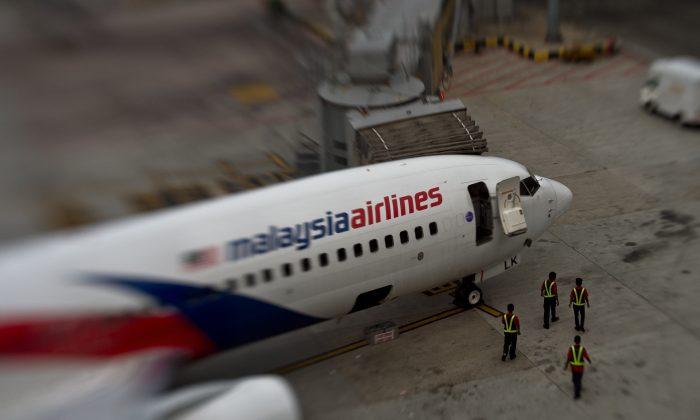Missing Malaysia Airlines Flight MH370 likely “spiraled” into the remote southern Indian Ocean in March after it ran out of fuel, according to a new report. It also says that the search area in the Indian Ocean--the remote “7th arc”--might not be where the plane disappeared.
The report was drafted up via simulators from the Australian Transportation Safety Bureau.
“The simulator activities involved fuel exhaustion of the right engine followed by flameout of the left engine with no control inputs. his scenario resulted in the aircraft entering a descending spiralling low bank angle left turn and the aircraft entering the water in a relatively short distance after the last engine flameout,” the report says.
It adds that the aircraft could be “located within relatively close proximity” to the “7th arc,” where investigators are currently searching.
The plane, which had 239 on board when it disappeared March 8, was heading from Kuala Lumpur to Beijing. Officials believe it was turned around before crashing hundreds of miles west of Perth, Australia.
The report said that the search area could be changed again.
“A combination of a better understanding of the ground initiated telephone call messages and a refined SATCOM system model both indicate that an area further south on the 7th arc search should be prioritized,” reads a summary of the agency’s report. “Although of reasonably high confidence, and relatively large, this area does not contain all the possible derived paths.”

The first of three ships arrived in the search area in the past week. The Malaysian-contracted GO Phoenix is slated to spend 12 days searching for a sign of the plane.
Two other ships contracted by Dutch firm Fugro will join the GO Phoenix later in October.
Crews will use sonar, video cameras and jet fuel sensors to scour the seabed for the Boeing 777, which vanished for reasons unknown on March 8 during a flight from Kuala Lumpur to Beijing with 239 people on board.
The search has been on hold for four months so crews could map the seabed in the search zone, about 1,800 kilometers (1,100 miles) west of Australia. The 60,000-square kilometer (23,000-square mile) search site lies along what is known as the “seventh arc” — a stretch of ocean where investigators believe the aircraft ran out of fuel and crashed. Officials analyzed transmissions between the plane and a satellite to estimate where it entered the water.
Two other ships being provided by Dutch contractor Fugro are expected to join the Malaysian-contracted GO Phoenix later this month.
The ships will be dragging sonar devices called towfish through the water about 100 meters (330 feet) above the seabed to hunt for the wreckage. The towfish are also equipped with sensors that can detect the presence of jet fuel, and are expected to be able to cope with the dizzying depths of the search zone, which is 6.5 kilometers (4 miles) deep in places.
If anything of interest is spotted on the sonar, crews will attach a video camera to the towfish to film the seabed.
Australian Transport Safety Bureau Chief Commissioner Martin Dolan, whose agency is leading the search, has expressed cautious optimism that the plane will eventually be found.
“We’re confident in the analysis and we’re confident that the aircraft is close to the seventh arc,” he said.
The Associated Press contributed to this report.





